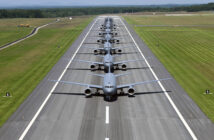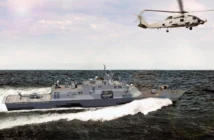The UK Ministry of Defence has awarded a £108 million contract to SRC UK (Lincoln, UK) to demonstrate the application of automated processing techniques for signals intelligence (SIGINT) sorting.
The activity, known as Project COMBINE, aims to improve the efficiency of bulk data sifting in order to reduce the time taken from signal intercept to actionable intelligence without sacrificing accuracy.
Managed by the MOD’s Joint Electronic Warfare Operational Support Centre (JEWOSC), Project COMBINE seeks to improve SIGINT triage and processing capability using automation, recognizing that the growing number of emitters and signals has significantly increased the amount of radar data to sift and sort.
“By using automated systems to process simple tasks, more of the SIGINT analysts’ time can be spent on complicated problems,” according to program description JEWOSC. It also stated, “We foresee three main steps to achieving this: Identify then automate processing of patterns and behavior we are already aware of (known known). Identify information we are actively seeking (known unknown) for further scrutiny. Identify information we are unaware of (unknown unknown) to generate further activity. These intercepted signals will need to be matched to a stored database, create new records for new intercepted signals and be able to identify the type of signal intercept.”
According to a redacted statement of work published by the MOD, SRC UK is responsible for delivering two separate work packages over a 12-week period: Work Package 1 (WP1) covers the demonstration of developed, de-interleaving software against MoD-provided synthetic data to the required standard; Work Package 2 (WP2) will demonstrate matching software against the synthetic data (scenario data and emitter database) to the required standard.
The solution will be assessed against a series of key performance indicators (KPIs). For example, in WP1 the de-interleaving software will be assessed as to its ability to identify correctly and accurately the number of waveforms in a synthetic scenario; to identify correctly and accurately classical radar parameters from any identified waveform; to highlight clearly the waveforms in a scenario that are outside of confidence threshold and require analyst attention; and to complete the entire process (ingest to completion of de-interleaving) quickly enough to process incoming intercepts in a timely manner.
KPIs will also be applied to WP2. One example is whether the solution can correctly apply the waveforms detected in WP1 and seek matches within the synthetic emitter database file: In this case, the process shall report one or more matches to the user or report that no matches can be found and prompt to create a new data entry to be added to the emitter database. On completion of matching, the solution should produce an interactive report/interrogation tool for analyst overview along with a digital document that references what has been matched/not matched. – R. Scott





